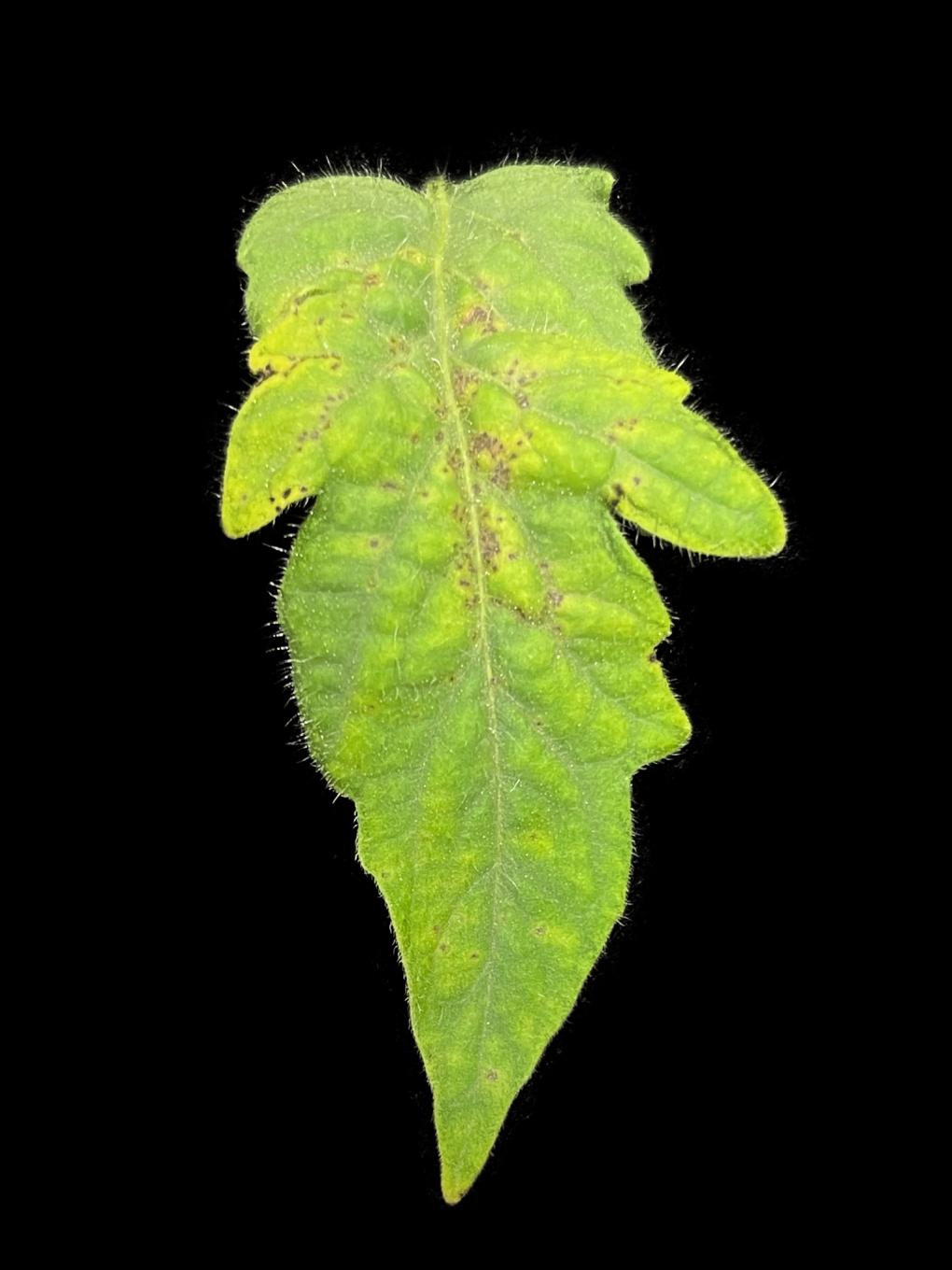感染した植物間で微生物を何度も移動させることで生まれる病害抑制能力 Disease-suppressive capability created by multiple transfers of microbes between infected plants
2022-07-11 ペンシルベニア州立大学(PennState)
 This tomato leaf shows lesions caused by bacterial speck of tomato, a disease caused by a pathogen called Pseudomonas syringae pv. tomato, or Pto. Credit: Penn State.
This tomato leaf shows lesions caused by bacterial speck of tomato, a disease caused by a pathogen called Pseudomonas syringae pv. tomato, or Pto. Credit: Penn State.
この研究では、温室に4系統のトマトの苗を並べ、異なる処理群と対照群を作り、研究者は、畑の健康なトマトの葉から集めた微生物を植物から植物に繰り返し「継代」または移植し、その後、細菌性斑点病原体を植え付けた。
その結果、葉に茶色から黒色に変色するなどの病徴が弱まり始め、9回目にはほぼ半分に減少した。
<関連情報>
- https://www.psu.edu/news/research/story/above-ground-microbial-communities-quell-plant-diseases-can-be-developed/
- https://apsjournals.apsnet.org/doi/10.1094/PBIOMES-05-22-0030-FI
トマトの細菌性斑点病に対する抑制効果を発現する葉圏微生物群集 Passaging phyllosphere microbial communities develop suppression towards bacterial speck disease in tomato
Hanareia Ehau-Taumaunu and Kevin Hockett
Phytobiomes Journal Published:20 Jun 2022
DOI:https://doi.org/10.1094/PBIOMES-05-22-0030-FI
Abstract
Microbial community-based disease management approaches have the potential to substitute or combine with currently employed strategies. Suppressive soils are great examples of microbial communities that suppress soilborne plant disease after severe outbreaks and are maintained over multiple years or crop cycles. While there are many suppressive soil examples, to our knowledge, there are no descriptions of disease suppressive phyllosphere communities. Therefore, we investigated whether a phyllosphere microbial community could be developed through a selective passaging method to suppress disease using the model pathosystem of Pseudomonas syringae pv. tomato (Pto) and tomato. Field tomato phyllosphere microbial communities were recovered, and spray transferred to greenhouse tomato plants, after which were inoculated with Pto. Disease severity was visually estimated, and the microbial communities were recovered to be independently applied to the next passage. Overall, greenhouse passaging resulted in an increase in disease severity for all passage lines from the initial passage, which peaked at passage 4-5, followed by a sharp decline until passage 9. The disease severity at passage 9 was also significantly lower than a non-passaged Pto only comparison. Heat-treatment of passage 9 communities resulted in elevated disease severity over several subsequent passages in the growth chamber, whereas the untreated community maintained low disease. Community-only passage lines (without Pto inclusion during passaging) did not show disease suppression after subsequent pathogen introduction. This work presents an experimental approach to develop phyllosphere microbial communities in the presence of a phytopathogen to enrich for a low disease phenotype and results in maintained disease suppression.


